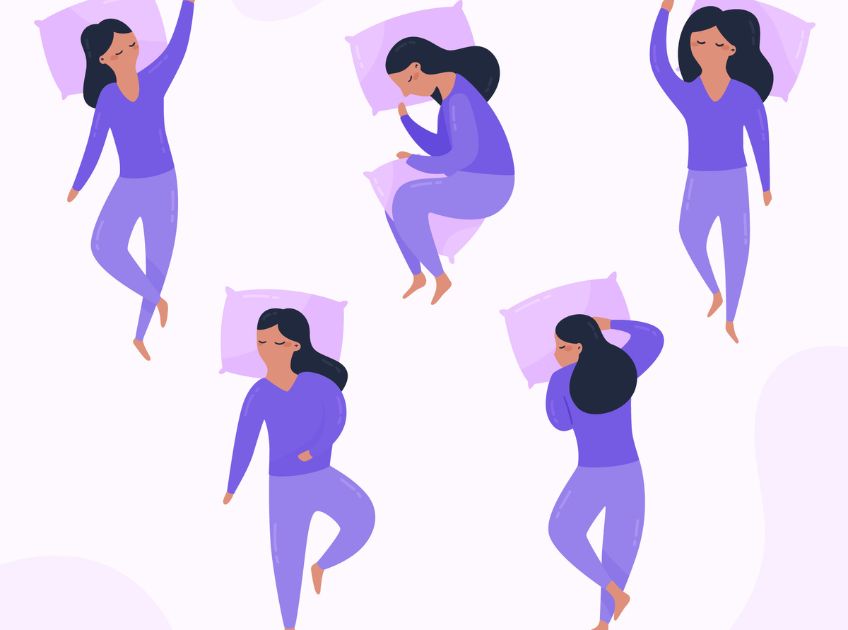
Important: This article is for informational purposes only. Please read our full disclaimer for more details.
If you’ve ever been jolted awake by a burning sensation in your chest, you’re not alone. Gastroesophageal reflux disease (GERD) affects millions, and it tends to flare up most during the night (1). Poor sleeping posture can make things worse, while the right position can help you manage symptoms naturally and improve your overall sleep quality. In this article, we’ll explore the science-backed sleeping positions that ease GERD and offer actionable tips for a better night’s rest.
What Is GERD and Why Does It Affect Your Sleep?
GERD occurs when stomach acid frequently flows back into the esophagus, irritating its lining. This backward flow, known as acid reflux, becomes more pronounced when lying down due to gravity no longer keeping the acid in the stomach. As a result, many GERD sufferers experience increased symptoms—like heartburn, coughing, and regurgitation—during sleep.
Best Sleeping Positions for GERD Relief
Sleeping with GERD can be a nightly struggle, but the good news is that simple adjustments to your sleep position can significantly reduce reflux symptoms. Below are the top expert-recommended positions for GERD relief, backed by science and real-world results.
1. Sleep on Your Left Side
This is widely considered the most effective sleeping position for people with GERD.
Why it helps
Anatomically, your stomach sits slightly to the left side of your abdomen. When you sleep on your left side, gravity works in your favor, helping to keep stomach acid in place and below the esophagus. This reduces the chances of reflux and the intensity of symptoms like heartburn or regurgitation.
Scientific support
A landmark study in The American Journal of Gastroenterology found that participants who slept on their left side experienced significantly fewer reflux episodes and faster acid clearance compared to right-side sleepers (2).
Bonus tip: Use a body pillow to help you stay on your left side comfortably throughout the night.
2. Sleep with Your Upper Body Elevated
If you prefer sleeping on your back or can’t stay on your side, elevating your upper body is the next best solution.
Why it helps
Raising your head and torso above stomach level uses gravity to prevent acid from rising into your esophagus. It also relieves pressure on the lower esophageal sphincter (LES), the muscle responsible for keeping acid in the stomach.
How to do it
- Use a wedge pillow made specifically for GERD and acid reflux.
- Or, elevate the head of your bed by placing 6–8 inch blocks under the frame.
Pro tip: Avoid stacking regular pillows as they can bend your neck and worsen posture, leading to back or neck pain.
3. Combine Left-Side Sleeping with Elevation
For those with moderate to severe GERD, this combination offers maximum relief.
Why it’s most effective
Sleeping on your left side while elevating your upper body provides a dual benefit—better gravity assistance and reduced esophageal pressure. This method is often recommended by sleep experts and gastroenterologists for managing chronic reflux.
Ideal setup
- A wedge pillow that supports side sleeping.
- Adjustable beds that raise the upper body without straining your lower back.
These positions can drastically improve your nighttime GERD symptoms, promote deeper sleep, and even reduce dependence on over-the-counter medications over time.
Sleeping Positions to Avoid with GERD
1. Sleeping on Your Right Side
This position can relax the LES, increasing the likelihood of reflux.
Fact: Right-sided sleeping has been linked to more frequent and prolonged acid exposure during sleep.
2. Lying Flat on Your Back
While some people find back sleeping comfortable, it can cause acid to travel easily up the esophagus, especially after a late or heavy meal.
3. Sleeping on Your Stomach
This position increases pressure on your abdomen and LES, making reflux symptoms more likely to occur and intensify.
What Science Says About GERD and Sleep Positioning
- Journal of Clinical Gastroenterology: A 2015 study concluded that left-side sleeping significantly reduces nighttime acid exposure (3).
- Cleveland Clinic: Recommends elevating the head of the bed and avoiding right-side sleeping to ease GERD symptoms.
- National Institute of Diabetes and Digestive and Kidney Diseases (NIDDK): Suggests lifestyle modifications like sleep position as first-line treatment (4).
These findings support the idea that sleep posture isn’t just about comfort—it plays a key role in managing chronic acid reflux.
Frequently Asked Questions (FAQ’S)
Q1: How high should I elevate my bed to reduce GERD symptoms?
A: Elevate the head of your bed 6 to 8 inches using bed risers or a wedge pillow. This incline helps gravity keep acid in the stomach.
Q2: Can sleeping position alone cure GERD?
A: No, but it can significantly reduce symptoms. It’s best used alongside other lifestyle changes like diet, weight management, and medication.
Q3: Is it safe to sleep on my right side if I don’t have symptoms?
A: If you’re asymptomatic, it may be okay. But if you have a history of GERD, the left side remains the better option for prevention.
Your sleeping position can either soothe or worsen your GERD symptoms. Adopting a left-side sleeping posture, elevating your upper body, and avoiding positions that trigger reflux can dramatically improve your nights. Combined with lifestyle changes, these strategies offer a natural and effective way to manage GERD and protect your sleep quality.















